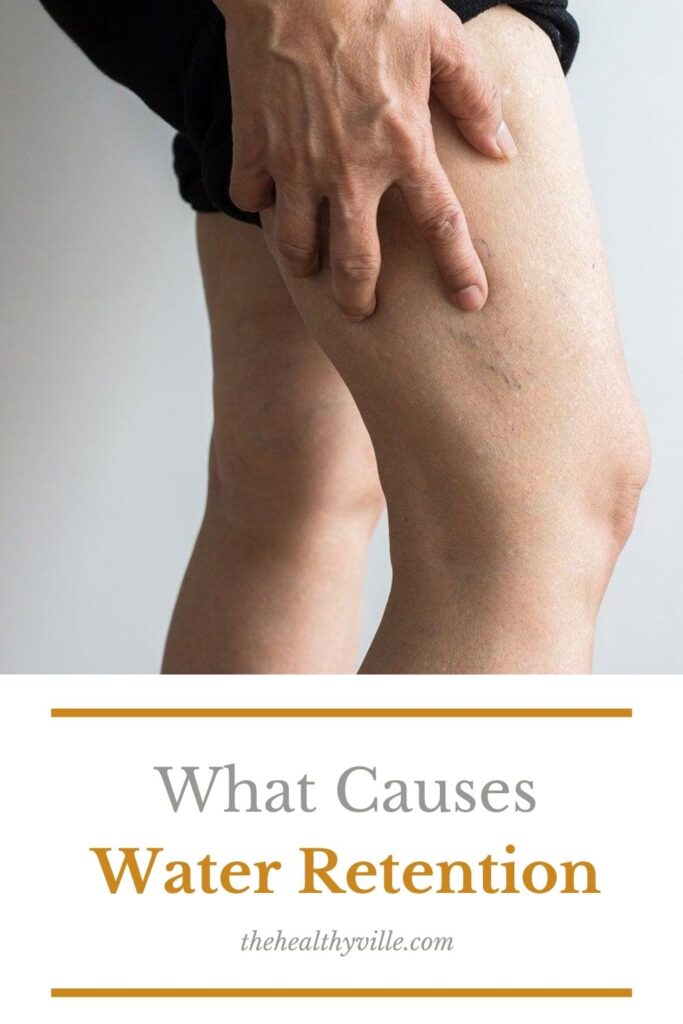What causes water retention? Its causes are diverse, you know, as is its treatment. Therefore, it is important to consult the doctor.
The body contains a high percentage of water, which is found inside and outside the cells. Under normal conditions, these fluids keep in balance; however, when faced with certain health problems, the body retains fluids.
This situation is called edema and is defined as a palpable swelling caused by the accumulation of extracellular fluid (found outside the cells). It is very common in practice, and the possible causes are very varied. Below, we detail more about it.
Why causes water retention?
The whole organism needs liquid for its correct functioning. Water is present in the blood, muscles, bones, fat, and in every organ. As we have discussed, these fluids are present both inside and outside cells.
In turn, the one that is outside can be divided between the one that is inside the blood vessels (arteries, veins and capillaries), and the one that is outside of them in a space called the interstitium.
Permanently, in a healthy organism there are fluid movements between the different compartments (cells, blood vessels and interstitium), as the body needs it. This constant redistribution of liquids is regulated thanks to a complex balance of pressure gradients (pressure differences).
There are situations in which the balance in the liquids can be altered, with its consequent increase in the interstitium. This is what we all know as “fluid retention” or “edema.” It can occur in a generalized or localized way. Let’s see its possible causes.
Causes of fluid retention
If the body retains liquids, it is advisable to request a medical consultation. Although it doesn’t always hide a serious problem, sometimes it is the sign of an illness. Therefore, if the symptom is persistent or appears and reappears regularly, it is better to request the appropriate examinations.
Heart failure
When the heart is not working properly, it is hard for you to pump blood to other organs. Consequently, there is an accumulation of blood in the venous circulation and the function of the kidneys is reduced.
Both situations generate fluid retention in the venous circulation, with edema that is clinically evident in areas of decline, for example, in the lower extremities when standing. Cardiac enlargement and respiratory distress may also occur.
Hepatic cirrhosis
Liver disease causes fluid retention in the abdomen, called ascites, and also edema in declining areas. According to an article published in An International Journal of Medicine, it is the most common complication of cirrhosis and affects up to 50% of diagnosed patients.
Nephrotic syndrome and other forms of kidney disease
In situations such as nephrotic syndrome or kidney conditions, fluid retention and loss of protein in the blood occurs. High blood pressure and edema are also evident in declining body regions. In the morning, edema on the eyelids is more noticeable. The body retains fluids across the board.
Pregnancy
During pregnancy changes occur in the body at the vascular level, since it increases the volume of blood, lowers blood pressure, among other situations whose purpose is to promote the growth of the fetus.
This cardiovascular adaptation usually causes the presence of edema, without these signifying an abnormality or disease. In any case, you should pay attention to the presence of shortness of breath, hypertension, cough, or fever, as they may indicate a complication.
Venous or lymphatic obstruction
The edema that occurs in these cases may be only to a limb or body area, since there’s localization in the circulatory disturbance. Therefore, we say that it is a focal liquid retention. The most common examples are the following:
- Chronic venous insufficiency.
- Deep vein thrombosis (clot obstruction).
- Chronic lymphangitis (inflammation of the lymphatic ducts).
- Regional lymph node resection.
- Standing or sitting for a long time.
The body also retains fluids as a result of gravity, especially when sitting or standing for an extended period. In these cases, it is common to notice swollen legs and feet, especially in the afternoon.
It is not a serious cause and you can improve it with measures such as stretching exercises, adequate water consumption and a good diet. In general, we should avoid excessive intake of sodium and processed products.
How to know if the body retains liquids?
The alteration of the balance of the body fluids brings with it several consequences. Whether they are serious or not depends on their cause. Regardless, it is best to seek medical attention to rule out complications or risks. The most common symptoms are the following:
- Weight gain.
- Difficulty removing rings or putting shoes on, especially in the afternoon.
- Swelling on the face, more marked on the eyelids.
- Edema in areas of decline. On legs, when standing; Or, in the lower back area if you are lying down.
- Stretched or shiny skin.
- Difficulty breathing or walking.
What to do if the body retains liquids?
Fluid retention symptoms may go away on their own in mild cases. However, if they occur recurrently or severely, it is best to see a doctor. You should not ignore the fact that many diseases can bring this problem to its symptoms.
Also, even in minor cases, lifestyle adjustments need to be made to prevent recurrence. Improving diet and starting to practice moderate physical exercise will be decisive in dealing with this situation. Also, in some cases there’s a requirement of the administration of diuretics and other medical treatments.
Don’t forget to SHARE what causes water retention with your friends and family on your social networks!

